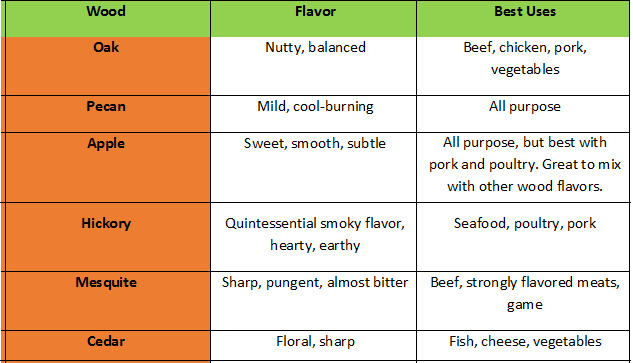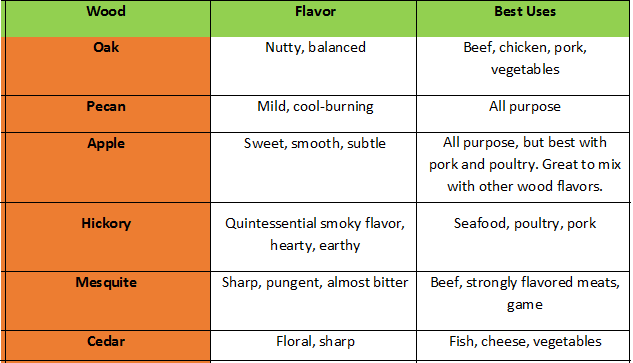The Complete Guide To Father's Day Grilling: Understanding The Different Types Of Grills
Proper temperature control is an underestimated essential for the home cook. For all you keen grilling people, we have good news: Modern grills often have a simple internal thermometer, making it easier than ever to ensure your food is cooked through, and remains as flavorful as possible. Take a look at the quick guide below to make sure you're on the right track!
The most popular grills on the market are powered by either gas or charcoal, and there are benefits to using both. Let's check out some of the benefits of each.
Gas Grills
Today's gas grills make firing up faster and easier than ever before. They are great for beginner grillers, and here's why:
- Easy to light.
- Heat up quickly.
- Easy-to-adjust temperature controls, giving you the ability to set up a hot zone for searing food and a cooler zone to finish the cooking process.
- Natural gas grills can hook into the main line for the house or patio, meaning there is a constant, and consistent, supply of fuel.
- New models have extra features such as sauté stations, rotisseries, and cutting-edge infrared cooking technology.
Charcoal Grills
Charcoal grills are all about adding extra flavor to your foods. Here are their benefits:
- Better flavor than gas, as the charcoal imparts its smoky, charred taste
- Charcoal burns hotter than gas.
- Choice of lump charcoal, charcoal briquettes, or a combination of the two, which have different benefits and cooking effects.
- Charcoal grills can function as an outdoor oven and smoker.
- Easy to set up for multi-zone cooking by carefully arranging the coals.
A note on charcoal: Lump charcoal requires more time to get burning than briquettes, which are uniform in size, heat consistently, and are less expensive. Grilling purists swear by lump charcoal for their cleaner flavor and higher heat, while beginners to charcoal grilling will find briquettes are a great way to get started with this technique.
Charcoal grills require a few necessary tools before you can get started. Don't forget to stock up on:
- Charcoal starter to get your fire roaring
- A chimney to house the coals as they heat up
- A shovel and can for ash
The type of grill you choose is all entirely up to your personal preferences.
"I love the performance of gas and use it often, but nothing can replace the flavor of natural smoke," says Jon Bonnell, executive chef and owner at Bonnell's Fine Texas Cuisine, and the author of three cookbooks on Texas cooking. "Sometimes I'll even add wood chunks to a gas grill and pull down the lid just to get a little extra flavor."
Pro Tip: Cooked meats need time to rest before cutting and serving. A general rule of thumb is to wait five to ten minutes before serving, but large pieces such as turkeys and briskets should rest for 30 to 45 minutes. This resting time allows the juices to settle back into the meat fibers, making for juicier, tastier meat.
Smoking
Until recently, a smoker used only wood or coal as fuel. Traditional barbecue restaurants burn logs of oak, pecan, and hickory to fuel huge pits that can hold hundreds of pounds of meat at a time. These days, the home chef can still experiment with a wood-burning backyard smoker, but technological advances mean that we can now use a pellet smoker/roaster or an electric smoker instead of the wood-burning one.
Just as grills have their own unique benefits, different types of smokers offer distinct advantages:
- Wood-burning smokers: These deliver classic flavors and aromas, and different types of hardwood can be used to create distinct flavors (see chart below).
- Pellet or electric smokers: If you're a newcomer to home-smoked foods, consider a pellet smoker or electric smoker as an introduction, because they offer easier temperature control and consistent heat. The smoke flavor comes from compressed wood pellets that burn evenly.
Traditional smoked foods include beef brisket, turkey, ribs, pork shoulder, ham, sausages, peppers, tofu, and seafood. It's a good idea to start with simple recipes and have fun experimenting as you get more comfortable with your smoker.
Pro Tip: Why not try smoking your own salt? Throw a bowl of salt on a grill set up for indirect heat. Add a smoker box with your favorite mix of wood flavors and cook for 30 to 40 minutes. The smoked salt can be added to any dish for a unique taste that will pleasantly surprise all of your guests.


